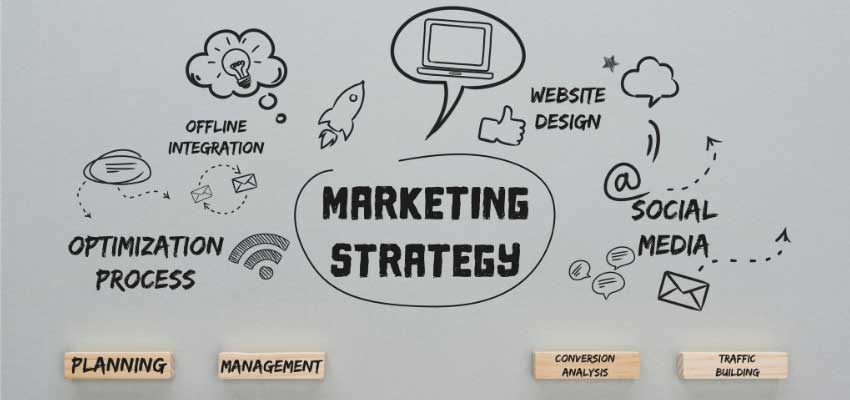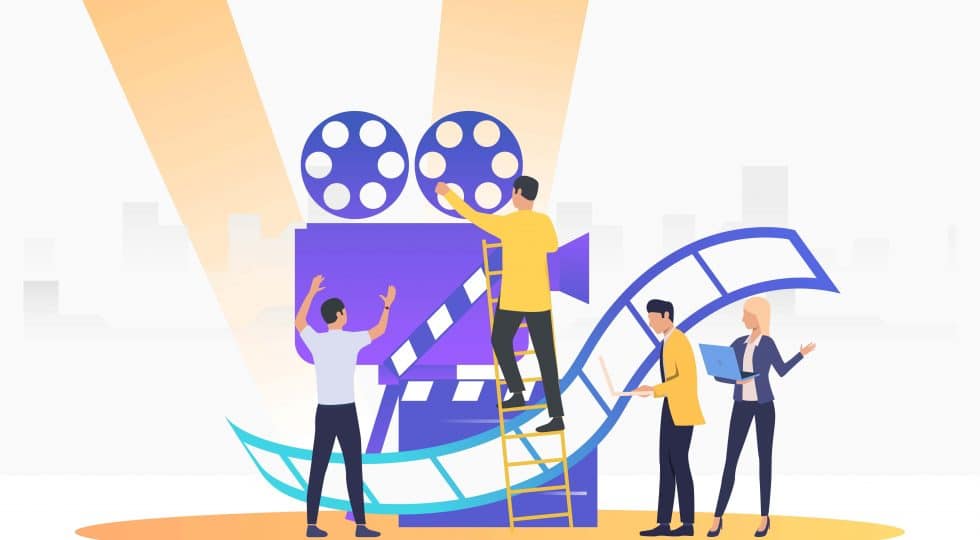What is digital marketing - and why is it more crucial than ever?
We live in a world where colleagues meet over Zoom instead of in the conference room. Neighbors envy each other on Instagram instead of over gardens. Children play FIFA instead of kicking the ball on the soccer field. Teenage girls use digital filters instead of stealing mom's makeup. Investors are discussing cryptocurrencies instead of securing their money in natural resources.
Facebook calls it the Metaverse, and we describe it as the digital profiles, experiences, and channels have become more decisive than the physical ones.
Like lightning from above, digital marketing has taken over the leadership of almost all growth companies. According to Statista, the traditional marketing budget of companies in the United States has decreased since 2012, while the digital marketing budget has increased between 8.2-15.8% per quarter during the same period.
To the delight of all marketers, digital marketing has gone from being a mainstay of the sales department to a leading directive for business development and growth with strong names such as content marketing, marketing automation and search optimization in the starting field.
Together in this blog we dig deeper into what strategies there are, which channels you can use and what segmentation is. Before that, we go through what digital marketing is and how to work with it. Finally, we reveal what the secret ingredient is to become perfect at digital marketing and how to stand out in the digital world just right.
Because even we Swedes have defied the Jantelagen and ventured into the digital world with big, confident voices to be seen and heard a little more than everyone else!
What is digital marketing and how do you work with it?
If you ask five different business leaders, you'll probably get five different answers, so let's establish the most overarching answer once and for all: digital marketing encompasses all the digital marketing efforts a business makes. That is, all digital processes that raise awareness of the company and its offer.
Whether you work with B2B (business-to-business) or B2C (business-to-consumer), digital marketing is about meeting the challenges of strategies, channels and segments to reach the right people, through the right channels and with the right message .
However, both for better and for worse. Digital marketers today often scratch their heads over the endless possibilities and often get stuck in the choice and the qualifier. Of course, knowing how to allocate resources and where to focus efforts is becoming increasingly difficult. Therefore, it is especially important that you who work with digital marketing are well aware of the tools available to effectively organize activities and maximize profitability.
What are the best digital marketing strategies?
There are many different strategies and techniques to tackle digital marketing. Which strategy is best for you will of course depend on your target audience and the business you run, but here are some of our favourites:
Content marketing
Regardless of what you work with, you will undeniably come across content marketing, a strategy that involves creating valuable content for your target audience.
Content marketing is an organic marketing strategy that has proven to be hugely effective for lead generation, the process of attracting and converting potential customers into actual customers.
When creating a strategy for your content, you should think value-based and long-term. Organic marketing must be natural and authoritative to produce results.
In order to know if your content contributes to actual results, it is important that you divide your content based on purpose and clear KPIs. For example, do you want to increase your follower base or do you want to generate more conversions? That decision will guide the type of content that is created and how to measure its results.
The most common types of content are:
Search optimized blogs
Social media posts
Infographics
Webinars / podcasts
Guides / white papers
Converting articles
Landing pages / service pages
Your story
Customer recommendations
Customer case
Lifecycle Marketing
As your content evolves, it's important to get to know your audience in depth. You do this by linking interactions with specific customer profiles. In this way, you create what is known as life cycle marketing. Others call it marketing to the different phases of the sales funnel. Both concepts emphasize the value of creating content for all parts of the sales process.
Take a look at the list above again. Do you notice anything special? Namely, it is organized by conversion rate. It means that, in most cases, SEO blogs and social media posts are created to reach high traffic with low conversion rate while landing pages and customer testimonials are created for a more specific audience with high conversion rate.
Ultimately, you want to try to spread your content as evenly as possible across the lifecycle or sales funnel. After you have done that, it is important to analyze which form of content gives the best results in each phase.
Remember – continuous improvement is always better than delayed perfectionism.
The importance of a calendar
If you succeed with content marketing, it can undoubtedly become one of the strongest strategies in digital marketing. But you can't do that without organizing your content in a calendar. Without a calendar, your work easily becomes unstructured and difficult to improve.
Download the APSIS content calendar to start structuring your content today.
Email marketing
Email marketing is the oldest but smartest trick in the box to reach out to both existing and potential customers. You who work with a clear email strategy often see a strong ROI through increased activity, traffic and sales on your website.
The biggest challenge with email marketing today is to stand out in the otherwise crowded inbox. To cut through the noise:
Write an eye-catching subject line
Show the most important message first
Have a clear CTA
Use a brand-uniform design
Make sure to follow all GDPR rules
Marketing automation
Once you have all your contacts, templates and messages in place, you can take your email marketing to the next level by automating your processes. You can do this by creating workflows of e-mails linked to specific activities on your website or your customer profiles.
These workflows, also called marketing automation, provide up to 5 times higher opening rates than regular bulk mailings and can provide up to 25% times the return.
Because who doesn't like to receive personalized offers on their birthday or a reminder when they forgot the product in the shopping cart?
Search Engine Optimization (SEO)
Search engine optimization, abbreviated SEO, is the art of ranking high among the results in search engines such as Google and Bing. SEO is often used as a strategy to reach out to new customers who otherwise don't know the company exists.
To be successful with SEO, you need to do thorough keyword research. Three simple steps to follow are:
Decide which keywords you want to appear for
Analyze which keywords your competitors appear for
Identify how difficult the keywords are to appear for
Once you have designed the strategy around the keywords, it is time to create content. You do this by creating a blog post (like this one!), a video or an image. The aim is then for it to appear among the top search results under the respective tab in Google or Bing.
Let's be honest – sometimes SEO can feel hopelessly difficult. Our best tip is to start with simpler keywords or longer search phrases with less competition to start showing up.
Remember that Google bases its search results on E-A-T: expertise, authority and trust.
Here it is about getting 1% better every day, marginal improvement all the way. You can join!
Social Media
Social media marketing is increasingly moving from being a channel for linked content to your website to being a megaphone for your brand voice. This is because the new algorithms on social media penalize those who share linked content with lower reach. So if you work with social media and your impressions have decreased over the past year - now you know why!
Therefore, we see more and more companies using their social media to entertain and build relationships with their target audience by participating in trends and creating conversations (but we can probably all agree that colleagues doing the Jerusalem dance are enough now...) .
Regardless, social media is a great way to attract, engage and activate your target audience.
Paid advertising
Paid advertising is a strategy you turn to when you want to drive results quickly and immediately. For example, when you have quarterly goals to achieve and the results haven't quite caught up yet. It is a much more pushy strategy compared to the other more value-based strategies.
Paid advertising today can actually produce great results for relatively little money, if used correctly. In recent years, both supply and demand for paid digital advertising have exploded all possible ceilings.
However, many have become immune to paid advertising as a result and are happy to refrain from clicking on an ad. Therefore, a marketing strategy based only on paid marketing is shallow and thin. To attract and convert, you should create an authentic relationship with the customer through a combination of both paid and organic marketing.
The most common types of paid advertising include:
Search Engine Advertising (SEM)
When SEO feels extra difficult and it's impossible to get on the first page of the keyword you want to be seen for, then you can turn to search engine advertising. Those who say money can't buy happiness haven't used SEM…
Social media advertising
As a result of the new algorithms giving your linked content less reach, you sometimes have to turn to paid social media advertising to spread the amazing content you spent weeks creating.
Image advertising
You can also choose to pay Google to appear in image and display form around the web. However, the finger of warning must be raised for these types of advertisements. Many of the websites that allow advertising from Google have low credibility. Be careful not to damage your brand!
Video advertising
Video ads on YouTube and other streaming services are the next generation of commercials. They may cost more than the other paid ads but they have a higher conversion rate than most and are great for branding.
Affiliate Advertising
Affiliate advertising is the thing that we all say we don't fall for but maybe do unknowingly anyway. It is when you pay for another person or brand to promote your products or services. That is, when the influencer you follow on Instagram tells you that he or she has tried something that has completely changed their life - do you fall for it?



Comments
Post a Comment